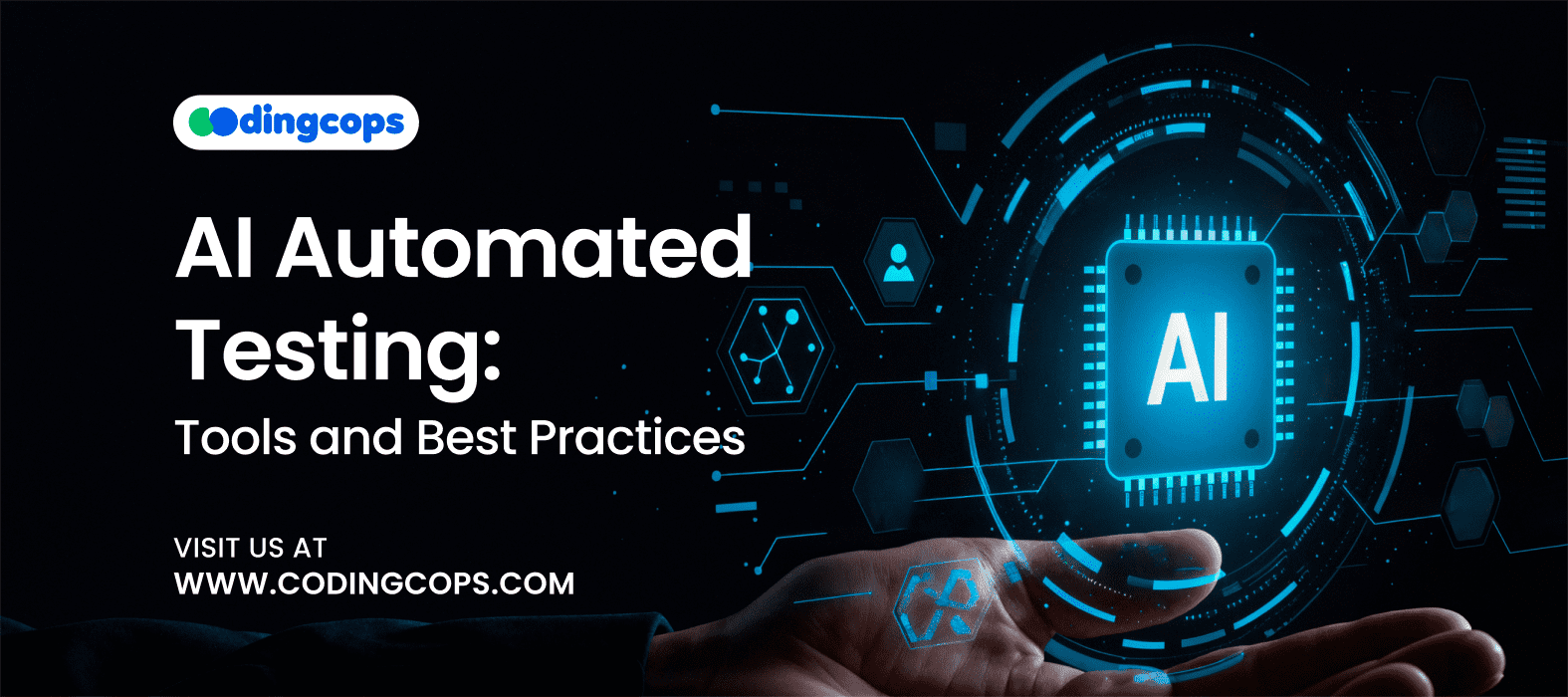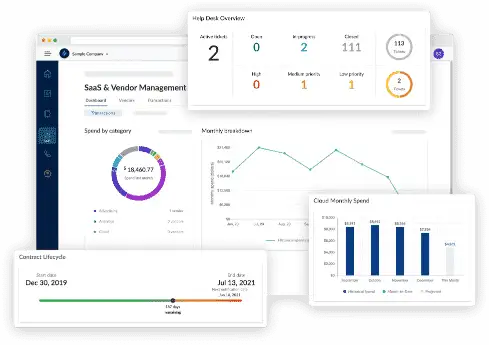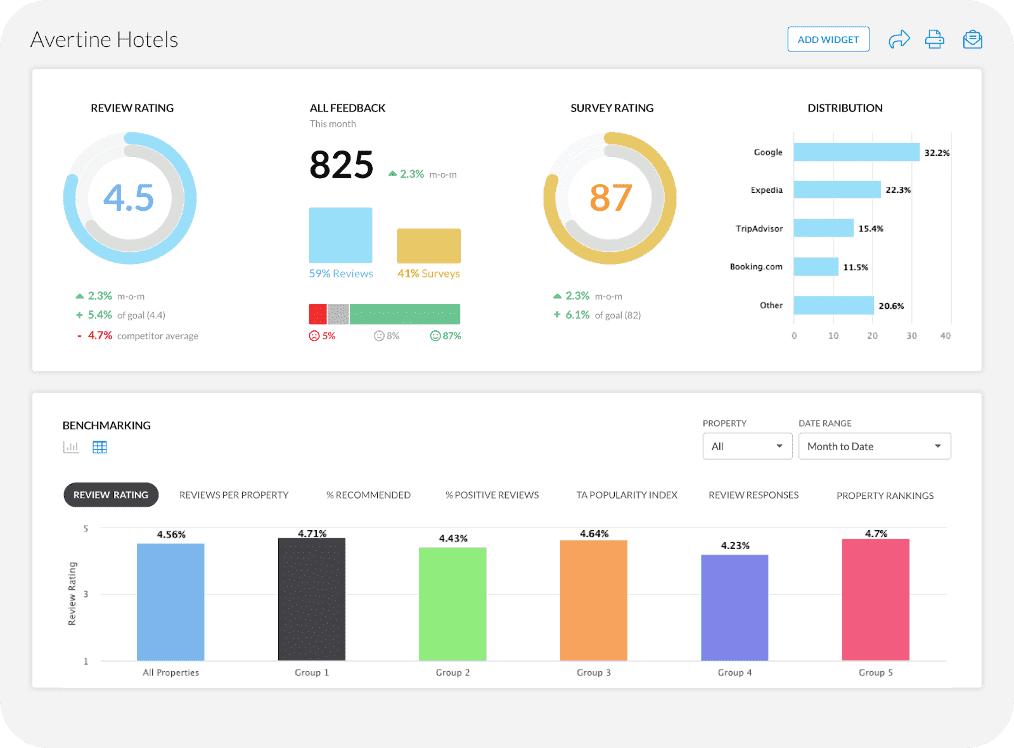Ensuring quality and an error-free software application is not possible without testing. Today, we are surrounded by software, and each software is marked as complete after rigorous testing. The software development industry is running at high speed, giving quality assurance a decisive and critical role.
Interestingly, the software testing industry and its market have grown exponentially in recent years. It was at $54.69 billion in 2024, which is going to be $57.95 billion in 2025. The game is not over yet as it is expected to grow up to $85.9 billion by 2030 with a 6% compound annual growth rate (CAGR). Here is the image showing the mentioned stats:
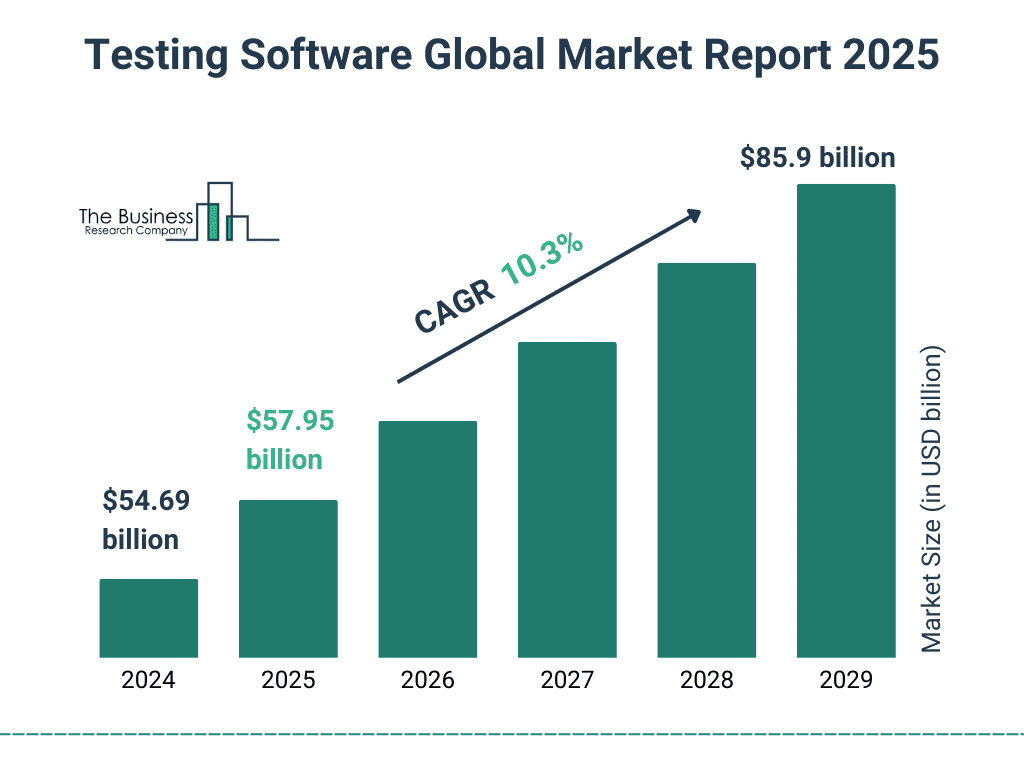
With this huge growth rate, it is nearly impossible to ensure faster time to market for various projects because manual testing is a time-consuming process. To tackle this issue, experts came up with AI-powered testing techniques to speed up the testing process, ensuring no errors and bugs.
It is transformative forces that are revolutionizing how we test, validate, and release software. So, in this blog, we will discuss how AI testing is revolutionizing the software testing industry, its benefits, AI testing tools, and much more.
So, let’s start!
What is AI-Powered Test Automation?
The terminology itself speaks for what AI-powered testing is. However, it is simply the test automation done by using artificial intelligence techniques. The AI-powered testing utilizes machine learning, natural language processing, and predictive analytics to make AI testing models and improve and automate the testing process.
What Does AI-Powered Testing Do?
- It generates test cases based on user behavior patterns.
- Identifies the areas of code that are most likely to break.
- Auto-heal the broken test scripts with any change in UI.
- Optimizes test execution by prioritizing high-risk areas.
Benefits of AI-Powered Testing
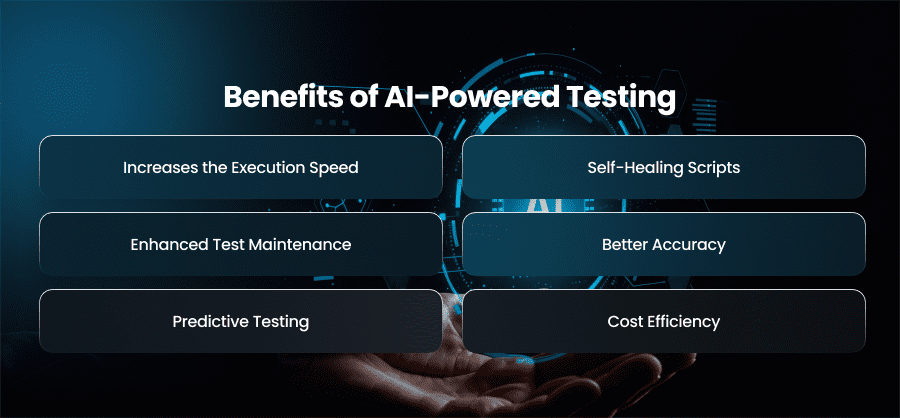
When you integrate a technology into your system or business, you understand its benefits first. Based on the benefits, you decide whether it is essential for you or not. Hence, you must know the perks of AI-powered testing before incorporating it.
Here are some irresistible perks of AI testing:
Increases the Execution Speed
Firstly, AI testing speeds up the process by automating repetitive tasks and streamlining task execution processes. The AI testing tools can analyze the application code and requirement documents to generate test cases. Moreover, it also automates regression testing, where you have to run the same test code multiple times.
Self-Healing Scripts
Secondly, the most time-consuming task is script maintenance in software testing. Just a small UI change by the developer can break automated tests. However, with AI testing, you get to resolve this matter by machine learning models that recognize element properties and adjust scripts automatically.
Enhanced Test Maintenance
Additionally, AI-powered testing tools are good at maintenance because of their robust and adaptive test maintenance capabilities. The AI tools can analyze test results, identify patterns, and update test scripts to adjust the system code or environment changes.
Moreover, this reduces the manual intervention and reduces the test script fragility.
Better Accuracy
Traditional software testing by humans is prone to errors, overlooking edge cases, or repeating steps incorrectly. However, with AI testing, the system is neither tired nor distracted; it executes accurate tests consistently while following the predefined logic. Moreover, it also uses past data to improve the test design.
Predictive Testing
With AI testing, systems can run predictive testing while using historical data and machine learning to identify the most error-prone functions or components of an application. This strategy eliminates the need to run the entire test suite, as AI prioritizes tests based on the likelihood of failure or business impact.
Cost Efficiency
Lastly, using AI testing rather than traditional testing methodologies proves to be highly cost-efficient. Undoubtedly, AI tools have an upfront cost, yet they deliver significant ROI by reducing the need for repetitive manual work, test maintenance, and long regression cycles.
Role of AI in Various Testing Techniques
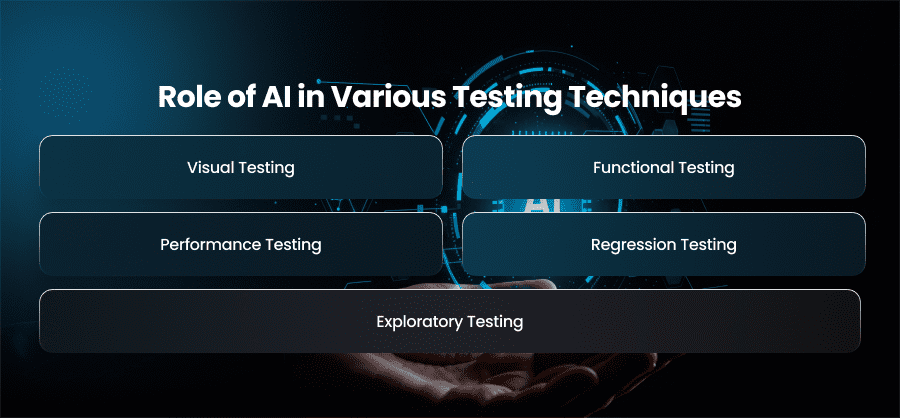
When you incorporate AI with various testing techniques, the following enhancements you witness in every technique:
Visual Testing
Firstly, AI-powered testing assists in visual testing by analyzing the user interface to detect changes that can disrupt the user experience. It may include layout issues, color changes, or broken elements.
Functional Testing
AI assists in functional testing by automatically generating test cases for different functions of the application and updating them as the system or application evolves.
Performance Testing
The best thing about AI comes out in performance testing. AI models are capable of simulating real-user behavior, which furnishes insights into how the app will behave under different conditions. This helps the developers to make the necessary changes and keep the application performing well in various scenarios.
Regression Testing
An essential component of software development is regression testing, which confirms that recent code modifications haven’t impacted the application or introduced new flaws. Regression testing with AI reduces needless executions by tracking code changes, identifying areas for improvement, and recommending retesting.
Exploratory Testing
Lastly, AI plays its part in exploratory testing by utilizing behavioral analysis and mimicking how a human tester would explore a new app to detect bugs in unexpected code lines.
Popular AI Testing Tools in 2025
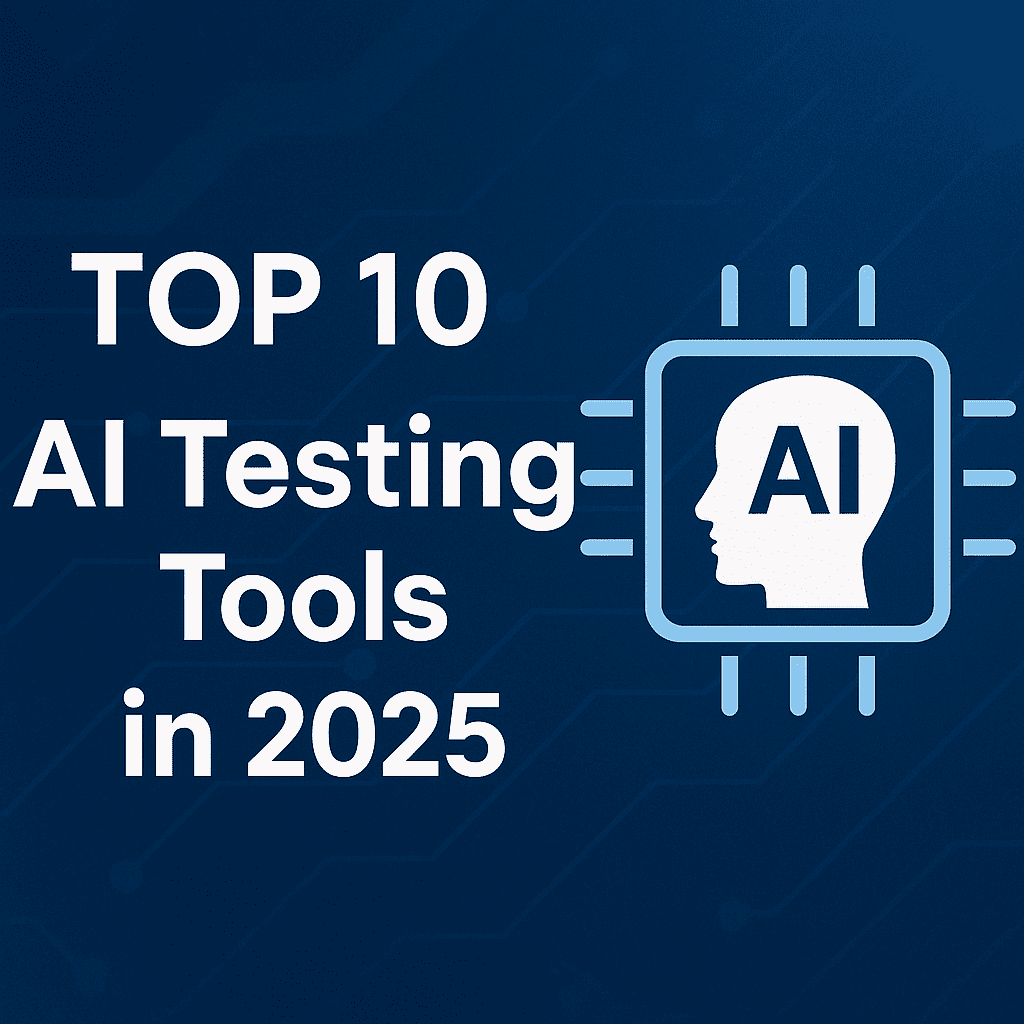
1. Apidog
We have Apidog in the first place. It is a versatile AI testing tool best for API testing. It comes with powerful AI features that automate your API tests, manage API documentation, and enhance team collaboration.
Key Features of Apidog
- AI-powered API testing and automation.
- API documentation management.
- Enhances collaboration
2. Testim
It is an AI testing tool that utilizes AI powers for creating, executing, and maintaining automated tests. Using this tool, you won’t have to worry about maintaining test scripts while enjoying robust test automation.
Key Features of Testim
- Creates and maintains tests using AI
- Capable of integrating with popular CI/CD pipelines
- Smart locators for dynamic elements
3. TestCraft
If you want to enjoy codeless test automation with AI-powered test creation, optimization, and maintenance, TestCraft is the best choice. It is an ideal solution for teams looking for robust automated tests without writing code.
Key Features of TestCraft
- Test automation without writing code
- AI-driven test optimization
- Real-time monitoring and reporting
4. Perfecto
Perfecto is another AI-based testing tool best suited for mobile and web applications. The best thing about Perfecto is that it offers a cloud-based platform for continuous testing. This allows for testing across multiple devices and browsers.
Key Features of Perfecto
- AI-driven test analysis and execution
- Cloud-based testing
- Real-time analytics and reporting
5. Katalon Studio
Using this tool, you can incorporate AI-driven testing for web, mobile, and API testing. Its user-friendly interface makes it effortless to interact with technical and non-technical users. Katalon Studio utilizes artificial intelligence for test creation, execution, and maintenance.
Key Features of Katalon Studio
- AI testing for web, mobile, and APIs
- Comes with built-in keywords for easy test creation
- Effortless integration with CI/CD tools
6. Applitools
If you need visual AI testing, choose no other platform than Applitools. It is an AI testing tool with advanced features for visually validating user interfaces. Applications looking for a consistent user experience choose it.
Key Features of Applitools
- Test creation with codeless tools
- Capable to test and validate any user interface
- Best for e-commerce and financial services websites
7. Mabl
It is an AI-powered test automation tool to make automated testing accessible to all members of the team. Mabl is best for agile teams engaged with web applications. It uses ML to detect and adapt to application changes, ensuring test coverage for a huge audience.
Key Features of Mabl
- Prepare mobile UI tests for hybrid and native mobile frameworks
- Integrates API tests into web and mobile tests
- Performs efficient browser and API load testing
8. TestComplete
Yet another, but exceptionally powerful, test automation tool is TestComplete. It is an AI-based object recognition engine that automatically identifies dynamic UI elements. It allows you to create and run tests for various applications, including desktop, web, and mobile apps.
Key Features of TestComplete
- Easy to use
- Cross-platform support makes it suitable for multiple devices and platforms
- Can be integrated with various tools and applications
9. LambdaTest
If you use LambdaTest to test your software applications, you can use emulator/simulator testing and real device testing. Moreover, with LambdaTest, you can utlize its KaneAI tool, which is a good choice for end-to-end testing.
Key Features of LambdaTest
- Allows manual and automated testing
- KanAI
- Emulator/simulator and real device testing
10. Ghost Inspector
The claim of Ghost Inspector is that it makes automated browser testing easier for everyone. Moreover, it is a no-code platform. Surprisingly, it does not appear to use real devices for testing.
Key Features of Ghost Inspector
- Codeless testing
- Visual testing with screenshot comparison
- The built-in recorder allows for capturing the video of the user flow
Best Practices for Implementing AI in Test Automation
You need to follow the rules of the game to be at the top. Hence, you can’t get up early in the morning and start doing AI testing and automation. For this, you need to follow the best practices for implementing AI in test automation.
Here are some best practices testers should follow:
- You need to start with a small module or project to experiment with AI testing tools. Once successful, you can start with a bigger project or module.
- Not every tool is for every type of code. You need to have a clear understanding of tools and their roles to choose the right one for your project.
- AI tools learn, train, and test on the provided data. Ensure to feed data that is clean, relevant, and comprehensive to avoid getting skewed or biased results.
- Choose tools that support seamless integration. Moreover, automated tests should run as part of your continuous integration process.
- Don’t over-rely on AI testing tools. This can lead to making big blunders. There’s no doubt that AI can automate repetitive tasks, but human testers can’t be neglected, as they are crucial for exploratory testing and decision-making.
- Monitor AI models regularly as they need fine-tuning. Keep looking at their performance to prevent inaccurate or biased predictions.
Rounding Off!
As we conclude, it is once again important to mention that a project can’t be successful without comprehensive testing, regardless of whether it is manual or AI-powered. However, you should shift to AI-testing techniques as it is the present. AI brings speed and accuracy, and reduces the burden while being cost-efficient.
Moreover, you also need to eradicate the misconception that AI testing will take over human testers. That’s not going to happen as testing needs human intelligence to keep an eye on AI systems, perform exploratory testing, and promote smart decision-making.

